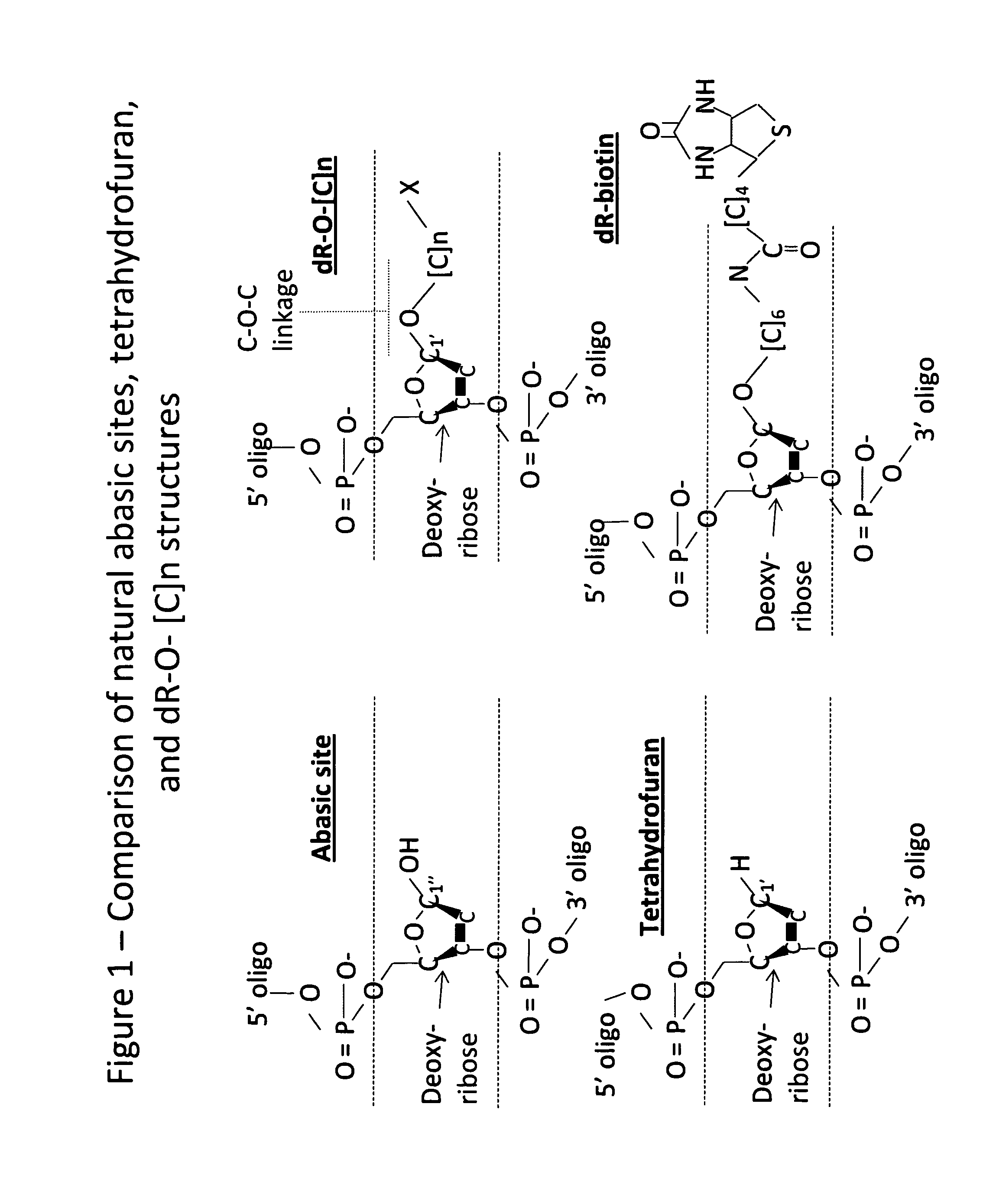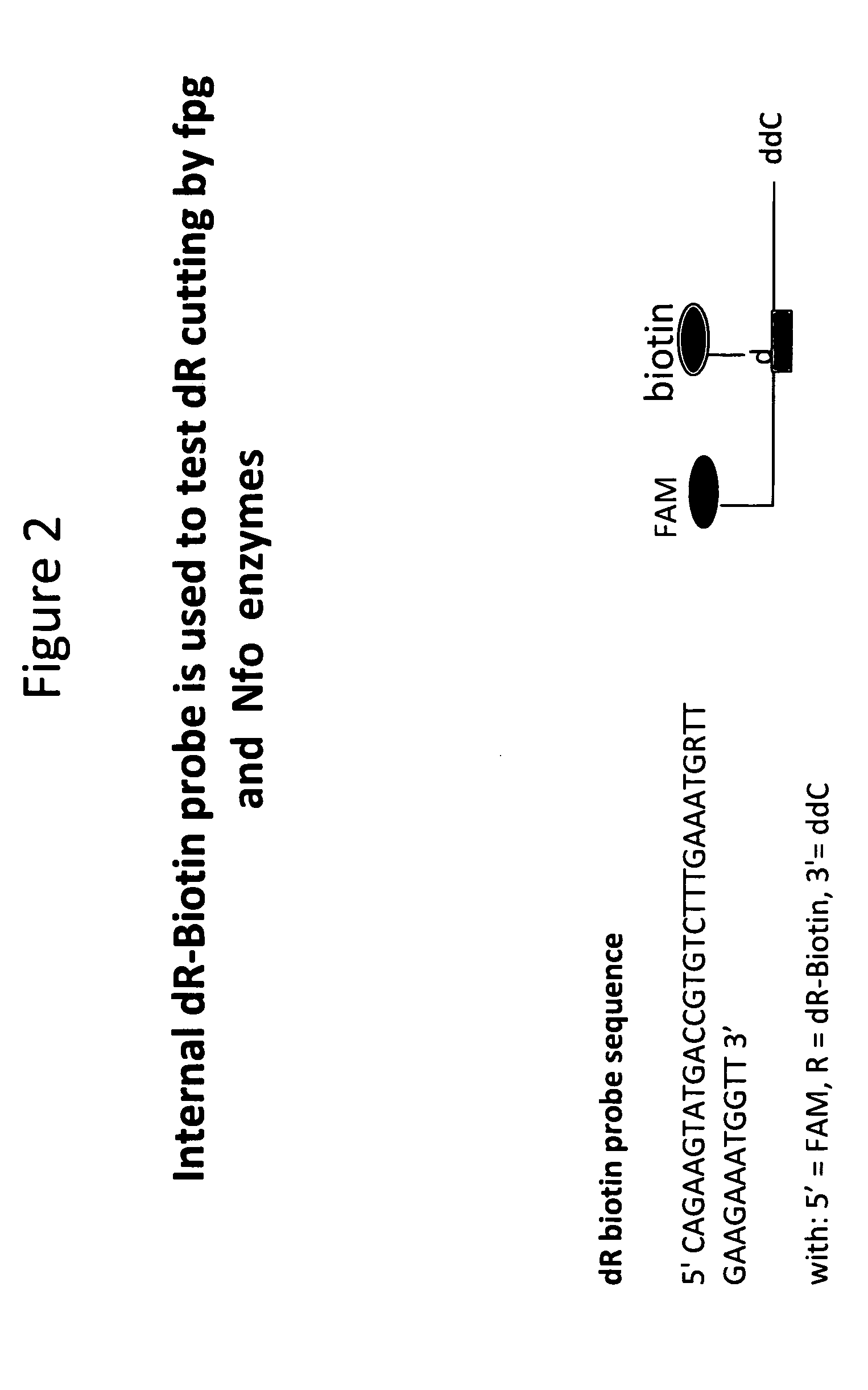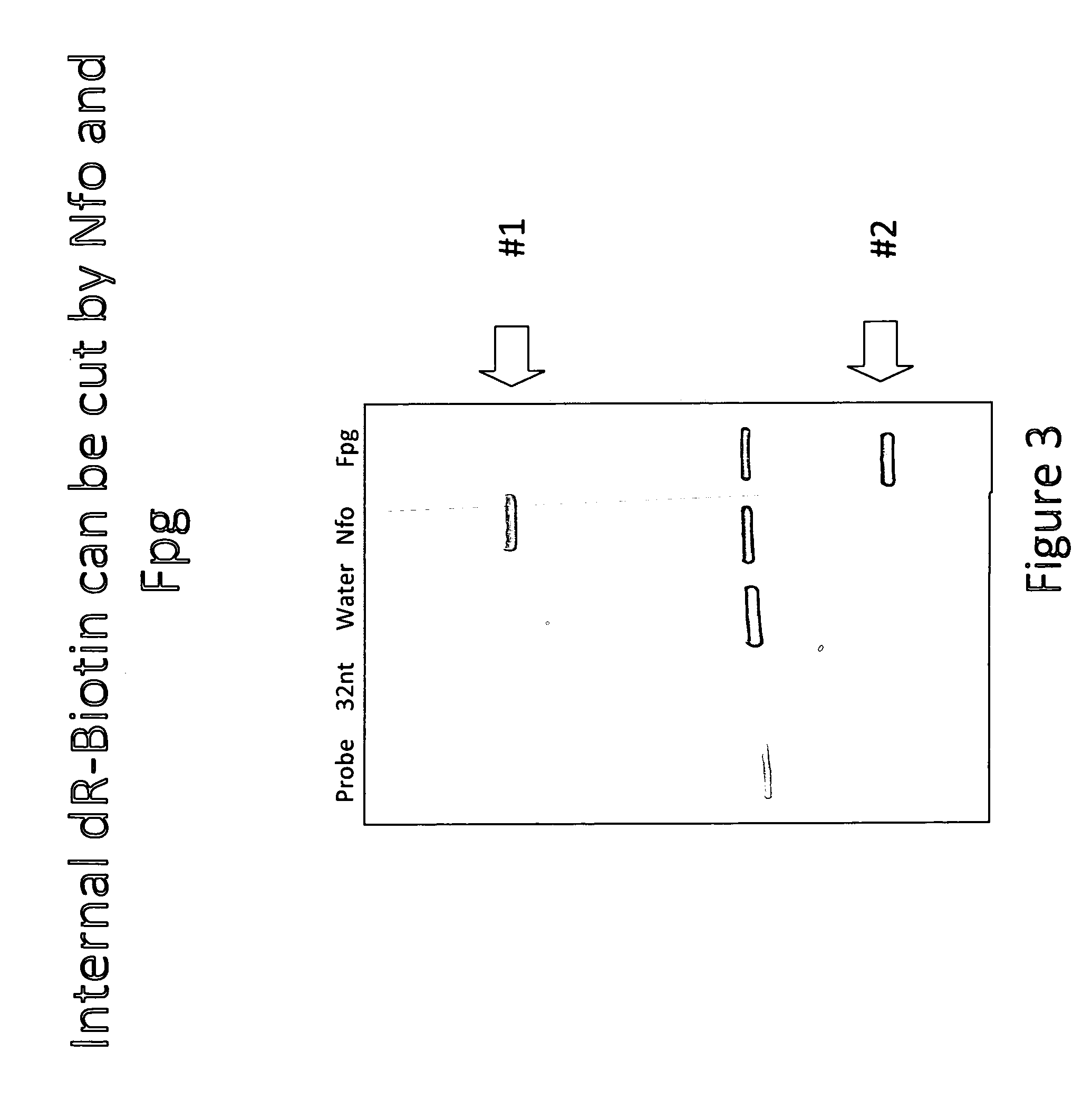DNA Glycosylase/Lyase and AP Endonuclease substrates
a glycosylase and endonuclease technology, applied in the field of oligonucleotide substrates, can solve the problems of typical damaged base analogs, unattractive use in some applications, impractical use in most molecular procedures, etc., and achieve the effect of preventing polymerase extension
- Summary
- Abstract
- Description
- Claims
- Application Information
AI Technical Summary
Benefits of technology
Problems solved by technology
Method used
Image
Examples
example 1
Oligonucleotides Probes Containing an Internal dR-Biotin are Cut by Nfo and Fpg
[0058]In this example it is shown that oligonucleotides probes, depicted schematically in FIG. 2, containing an internal dR-Biotin can be cut by Nfo and fpg. The reactions (total volume of 150 μL) were mixed from fresh reagents and incubated for 75 minutes at 37° C. Conditions used were 50 mM Tris / Acetate (pH 7.9), 14 mM Mg-Acetate, 100 mM Potassium-Acetate, 2 mM DTT, 200 nM each dNTP, 6% PEG 35,000, 3 mM ATP, 50 mM Phospho-Creatine, 900 ng / μL T4gp32, 120 ng / μL T4uvsX, 30 ng / μL T4uvsY, 360 ng / μL Bac. subtilis DNA polI. Either 3000 copies of DNA template or water (as a negative control) was included as indicated. Nuclease, 200 ng / μL Nfo or 50 ng / μL fpg, was included as indicated. Primers, K2 and J1, were included at 480 nM each and the probe, FpgProb1, was included at 120 nM, with their sequences provided below. Samples were quenched in one volume of 2% SDS / one volume phenol, mixed and incubated for 20 min...
example 2
Measurement of DNA Amplification with Oligonucleotides Probes Containing an Internal dR-Fluorophore
[0060]In this Example, RPA experiments using fluorescent reagents in which the dR-O—[C]n nucleotide is coupled to a fluorophore as depicted in FIG. 4. In this case, the dR-fluorophore is positioned close to the 5′ end of the oligonucleotide probe and in close proximity to a quencher which is attached to the very 5′ end. As in the previous example, the 3′ end of the probe is suitably blocked to prevent aberrant elongation or primer artefacts.
[0061]The reactions (total volume of 50 μL) were performed according to standard RPA protocol for freeze-dried reactions. Briefly, lyophilised reagents were mixed with PEG, Magnesium-Acetate and template, and incubated for 20 minutes at 38° C. in a fluorometer (Twista prototype; ESE GmbH, Germany). Conditions used were 50 mM Tris / Acetate (pH 8.3), 14 mM Mg-Acetate, 100 mM Potassium-Acetate, 5 mM DTT, 240 nM each dNTP, 5% PEG 35,000, 4% Trehalose 2.5...
PUM
| Property | Measurement | Unit |
|---|---|---|
| Time | aaaaa | aaaaa |
| Fluorescence | aaaaa | aaaaa |
Abstract
Description
Claims
Application Information
 Login to View More
Login to View More - R&D
- Intellectual Property
- Life Sciences
- Materials
- Tech Scout
- Unparalleled Data Quality
- Higher Quality Content
- 60% Fewer Hallucinations
Browse by: Latest US Patents, China's latest patents, Technical Efficacy Thesaurus, Application Domain, Technology Topic, Popular Technical Reports.
© 2025 PatSnap. All rights reserved.Legal|Privacy policy|Modern Slavery Act Transparency Statement|Sitemap|About US| Contact US: help@patsnap.com



